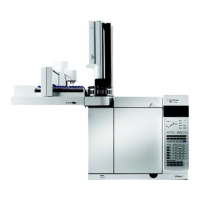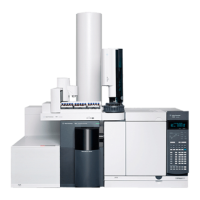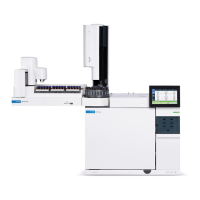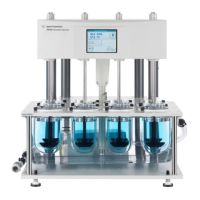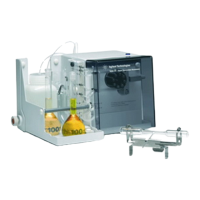GC Output Signals 7
Advanced Operation Manual 227
Signal Types
When assigning detector signals, use the [Mode/Type] key and
choose from the Signal Type parameter list, or press a key
or combination of keys.
[Front], [Back], [–], and [Column Comp] will work, alone or in
combination. For example, press [Back] for back detector or
[Back][–][Front] for back detector minus front detector. The
menu choices for signal subtraction (Front - Back and Back -
Front) only appear if the front and back detectors are of the
same type.
The nondetector signals are test plot, thermal, pneumatic,
and diagnostic. Access them by pressing [Mode/Type].
Diagnostic signals are for use by your service representative
and are not described in detail here.
Signal type can be programmed as a run time event.
Value
Value on the signal parameter list is the same as Output on
the detector parameter list if your signal type is Front or
Back. If you are subtracting one signal from another (as in
Front – Back), the signal Value will be the difference. You
cannot enter a setpoint for Value.
A conversion factor may be involved when interpreting
Value—for example, one FID unit is one picoamp; one uECD
unit is 1 Hz. The units for detector and other signals are
listed below.
Tabl e 56 Signal conversions
Signal type 1 display unit is equivalent to:
Detector:
FID, NPD 1.0 pA (1.0 × 10
-12
A)
FPD 150 pA (150 ×10
-12
A)
TCD 25 uV (2.5 × 10
-5
V)
µECD 1 Hz
Analog input board (use to connect the
GC to non-Agilent detector)
15 µV
Nondetector:
Thermal 1 °C

